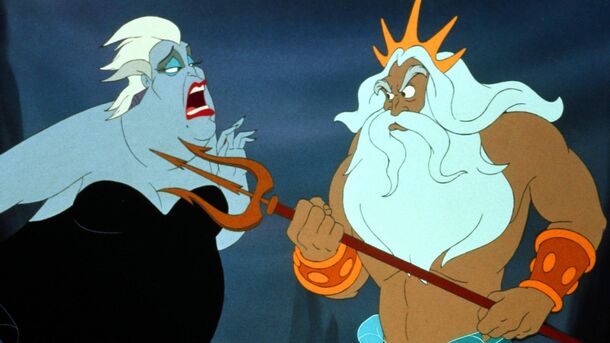4 Things From The Little Mermaid Live-Action That Will Hit Differently If You Are Grown Up

It turns out to be more than just a romantic tale.
The Little Mermaid is a classic Disney animated film released in 1989 that follows the story of Ariel, a young and curious mermaid who dreams of exploring the human world even against her father's wishes.
The enchanting story, which once captivated audiences of all ages, recently received its live-action remake and brought many fans back to their childhood memories. However, many things from the animation that we simply didn't notice when we were kids hit us differently with the release of the movie.
Let's take a look at some of the moments that may resonate differently with its grown-up audience.
Triton Had His Point
Remember when we were children, we sided with Ariel and didn't understand Triton's hard head towards the human world? It seems that you only begin to understand the older generation when you are grown up yourself.
Triton's hatred for humans is complex.
The death of Ariel's mother and the effects of shipwrecks on marine life contribute to his perspective. Triton's concern is justified, especially when humans hunt mermaids and pollute the ocean. While Ariel is innocent and curious, Triton's contempt reflects a harsh reality that only adult viewers can relate to.

The Underwater World Is Creepy
And we are not talking about Flounder and Sebastian’s design. Though the CGI really did dirty some crucial characters, there were much creepier things under the sea. Despite the cheerful and cute portrayal in the original cartoon, the sea creatures in The Little Mermaid are terrifying to look at.
The Under the Sea sequence features eerie creatures that are even more unsettling in their photorealistic rendering. It serves as a reminder that sea life can be incredibly scary, and there are solid reasons why the oceans are studied with less desire than space.
Parent-Child Problems
The problem of both Ariel and Prince Eric being deprived of their own choices and having to obey their parents’ rules resonates with the younger generation at a certain level. The movie represents parent-child communication and also delves deeper into the child's venture into the world.
Like Triton and Eric's mother, parents fear the challenges their loved ones may face and worry about their ability to navigate life independently, so they try to control them.
But as the movie concludes, the fears and worries fade. Sooner or later, every parent understands that they must let their children embark on their own fulfilling journeys and believe that their children are capable of making mature decisions on their own.
.jpg)
Sebastian Is A Good Friend
Though he is portrayed as Triton's confidant who was supposed to look after his younger daughter, at some point he breaks the rules and joins the other side.
In childhood, you might have thought Sebastian was inconsistent — he'd switch sides from running the King's errands to protecting Ariel from her father's wrath, but in fact, he was trying to achieve fairness but also staying loyal to the King.
Sebastian seems more willing to go along with Ariel's adventure and encourages her to follow her dreams, changing the perspective of his character compared with the beginning of the story.
Sebastian proves that he may not be quite loyal to the King in everything, but he is definitely a great friend to his daughter.